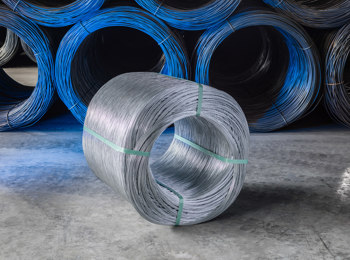Nov . 08, 2024 23:37 Back to list
Components for Gabion Wall Production from Trusted Manufacturers
Understanding Gabion Wall Parts and Their Manufacturing
Gabion walls have gained immense popularity in civil engineering and landscaping for their durability, versatility, and aesthetic appeal. These structures are made from gabions—wire mesh baskets filled with stones or other materials—and are commonly used for erosion control, retaining walls, and decorative landscaping. Understanding the individual components and the manufacturing process of gabion wall parts is essential for anyone interested in exploring this innovative construction method.
What are Gabion Walls?
Gabion walls consist of various parts, with the primary ones being the gabion baskets, the filling materials, and the connectors. The gabion baskets, typically made from high-quality steel wire, are designed to be rust-resistant and durable, ensuring longevity even in harsh environmental conditions. The filling materials, which can include rocks, gravel, or recycled materials, provide both structural integrity and aesthetic value. Lastly, connectors, such as clamps or ties, are used to secure multiple gabions together, enhancing stability.
Gabion Baskets
The core component of a gabion wall is the gabion basket itself. These baskets are usually constructed from double-twisted wire, as this technique increases tensile strength and resistance to deformation. The most common wire gauges range from 3.0 to 5.0 mm, depending on the intended application and the loads they need to bear. Gabion baskets are available in various sizes, typically ranging from 1 cubic meter to larger configurations to suit different project requirements.
Manufacturers often treat the wire to improve its durability. Common treatments include galvanization, which helps protect the wire from rust, and PVC coating, which adds an additional layer of protection and enhances visual appeal. The choice of treatment depends on the environmental conditions surrounding the intended installation site.
Filling Materials
The filling materials used in gabion walls are crucial for their performance and visual characteristics. Rocks are the most common material, providing stability and strength. When selecting rocks, it’s essential to ensure they are of adequate size—typically ranging from 4 to 8 inches—to prevent them from escaping through the mesh. Different types of stones can also create different aesthetic effects; for aesthetic applications, decorative pebbles or boulders may be used instead of standard construction materials.
In recent years, there has been an increasing trend to use recycled materials for filling gabions. Options may include crushed concrete, brick, or even glass. This not only provides an environmentally friendly alternative but can also result in unique visual appearances that set the project apart.
Connectors and Accessories
gabion wall parts factory

To ensure structural integrity, it’s vital to use appropriate connectors. These can vary from simple wire ties to more complex fastening systems. The choice of connector will depend on the specific application of the gabion wall, as well as the height and load it must support. Manufacturers often provide detailed specifications on the recommended connectors, which should align with industry standards to ensure safety.
Additionally, various accessories, such as geotextiles, drainage systems, and edge restraints, can be included to improve the performance and longevity of gabion walls. Geotextiles help to prevent soil erosion from behind the wall, while drainage aids in managing water flow, reducing hydrostatic pressure on the structure.
The Manufacturing Process
The manufacturing of gabion wall parts involves several key steps
1. Design and Prototyping Initial designs are created based on specific project requirements. Prototyping allows for testing and adjustments before full production begins.
2. Wire Preparation High-quality steel wire is drawn to the required gauge and treated for longevity.
3. Basket Fabrication Baskets are constructed through a process of twisting wires into the appropriate shape and size, ensuring proper tension and structure.
4. Quality Control Each batch undergoes stringent quality checks to ensure compliance with industry standards for strength and durability.
5. Packaging and Delivery Finally, the finished gabion parts are packaged and prepared for delivery to construction sites.
Conclusion
Gabion walls represent a dynamic and effective solution for a variety of engineering challenges. By understanding the components and manufacturing processes involved in gabion wall parts, builders and designers can make informed decisions that enhance the effectiveness and aesthetic appeal of their projects. As the demand for sustainable and visually attractive construction methods continues to grow, gabion technologies are poised to remain at the forefront of innovative building techniques.
-
HESCO Gabion Baskets for Coastal Erosion Prevention
NewsAug.22,2025
-
Longevity and Durability of River Rock Gabion Walls
NewsAug.22,2025
-
How to Integrate Gabion 3D Walls in Urban Planning
NewsAug.22,2025
-
Reno Mattress Gabion Applications in Civil Engineering
NewsAug.22,2025
-
How to Install Wire Mesh for Gabion Baskets Properly
NewsAug.22,2025
-
Best Materials for Filling a Chain Link Gabion
NewsAug.22,2025
-
Wire Mesh Thickness Impact on Gabion Wall Load Bearing
NewsAug.12,2025






